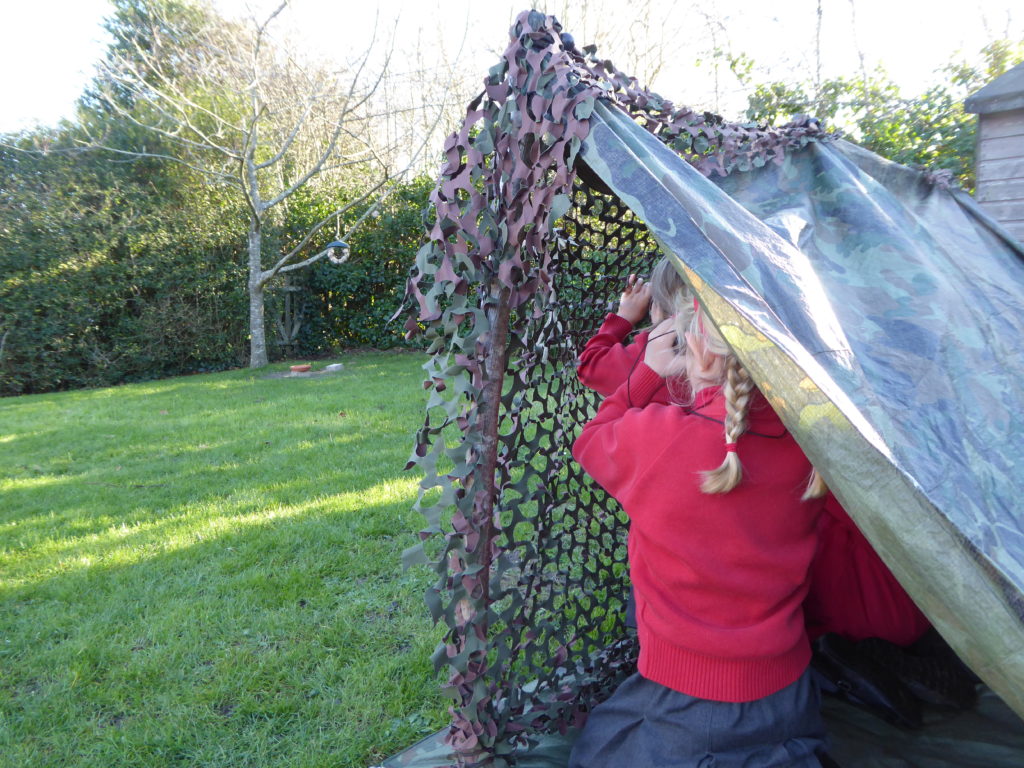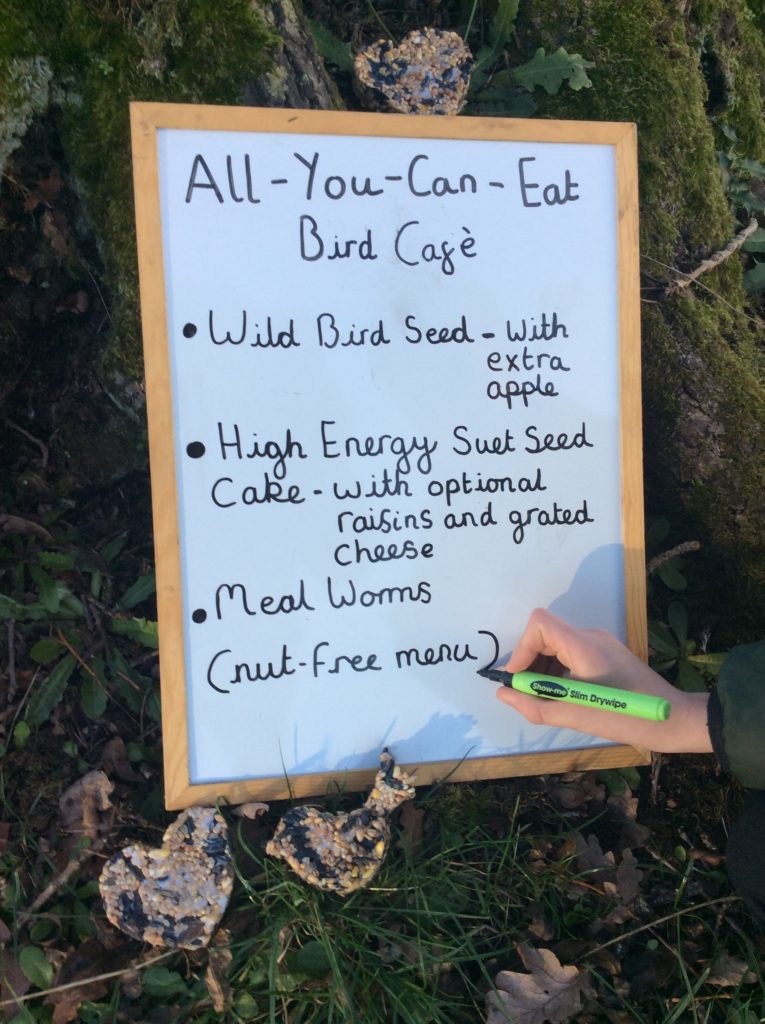
It surprised me that there doesn’t seem to be that much on the web about birdwatching activities with children. So I decided to put down a few of the ideas that I have used to nurture childrens’ natural curiosity and engage them with the fantastic bird life just outside their door.
Although the winter can appear to be an uninviting season to be outdoors, it’s great for birdwatching as the cold weather brings birds into our gardens, looking for much needed food and shelter. These include the friendly and familiar robins, the cheeky house sparrows and the noisy star-spangled starlings. There are up to 30 different species of garden songbirds that can inspire endless learning opportunities. Here are a few of my tips for bird watching with children – our future generation of nature adventurers.
Open your own bird café: Regular feeding throughout the year, especially in winter, will attract a wider variety of bird species to watch and study. There are many types of feeders that can be brought or made. Remember some birds such as dunnocks and thrushes will only feed from the ground. Children love to design and make their own bird food recipes and a fun survey could record which recipes attracts which species. Then create your own menu board. Don’t forget to provide fresh water in a shallow bowl.

Make an outdoor viewing hide: A bird hide or screen is essential to view birds up close without disturbing them. Make a simple and fun den using hazel poles, a tarpaulin and a camo netting screen; wooden pallets make a comfortable base to sit on. Hazel hurdles with rectangular gaps for viewing windows at different heights also make the perfect natural hide. Sections can be easily moved and set up near feeding stations. Hot chocolate is optional!
Bird stalking: Using face paints to create camouflaged faces, small groups can creep or crawl along the ground to an agreed distance from a bird feeding station. They can watch birds up close with just their eyes and learn the skills of being calm and patient when watching wildlife; to tune into nature.
Make bird watching fun: Using binoculars is a learnt skill through lots of practice. Start by asking children to create a tunnel with their hands to look through – helping them to become familiar with a restricted field of vision. For younger children two small cardboard tubes taped together is perfect! These are your ‘owl eyes’ and demonstrate fixed vision; looking straight ahead as owls cannot move their eyes inside their head.
I-Spy: Next I set up an ‘I-spy’ trail with cut out laminated pictures of common garden birds hung from bushes. As they don’t move children can patiently learn to point and focus binoculars in the right direction! A sitting position is best, so their body is stable and still. Choose binoculars with a wide field of view (30-32mm). Travel / pocket models are perfect for small hands.
Beyond binoculars: With higher magnification a fixed telescope, already focused on a bird table / feeder, adds a new exciting dimension to bird watching. I use a box step for smaller children to stand on to look through the scope rather than adjusting the scopes height. Hint: get children to cover the eye not looking down the scope and ask them what they can see to check they can focus. Maybe play a game of ‘Wink murder’ to practice closing alternate eyes as this can be tricky!
Identification check list: Encourage children to look at beak shapes and colour; to recognise similarities and differences in body shape, feather colours and patterns, and how birds move. For example, robins and blackbirds hop and perch, whilst blue tits are amazing acrobats and hang upside down from feeders. Children love using bird spotter charts to tick off sightings.
Behaviour detectives: Each bird species have different behaviours and personalities. It’s fun for children to look and listen for different behaviours – which birds are the bossiest and who is more cautious? Watch birds sunbathing, taking a bath and preening, or trying to pull a worm out the ground. Observations could inspire a story, a poem or drawings for a bird book.
Take part in the RSPB Big School or Garden bird count: Go to www.rspb.org.uk/birdwatchhowto and help collect information about the health of our bird populations – citizen science in action!
Let me know if you like or find any of these activities helpful. Have fun!
